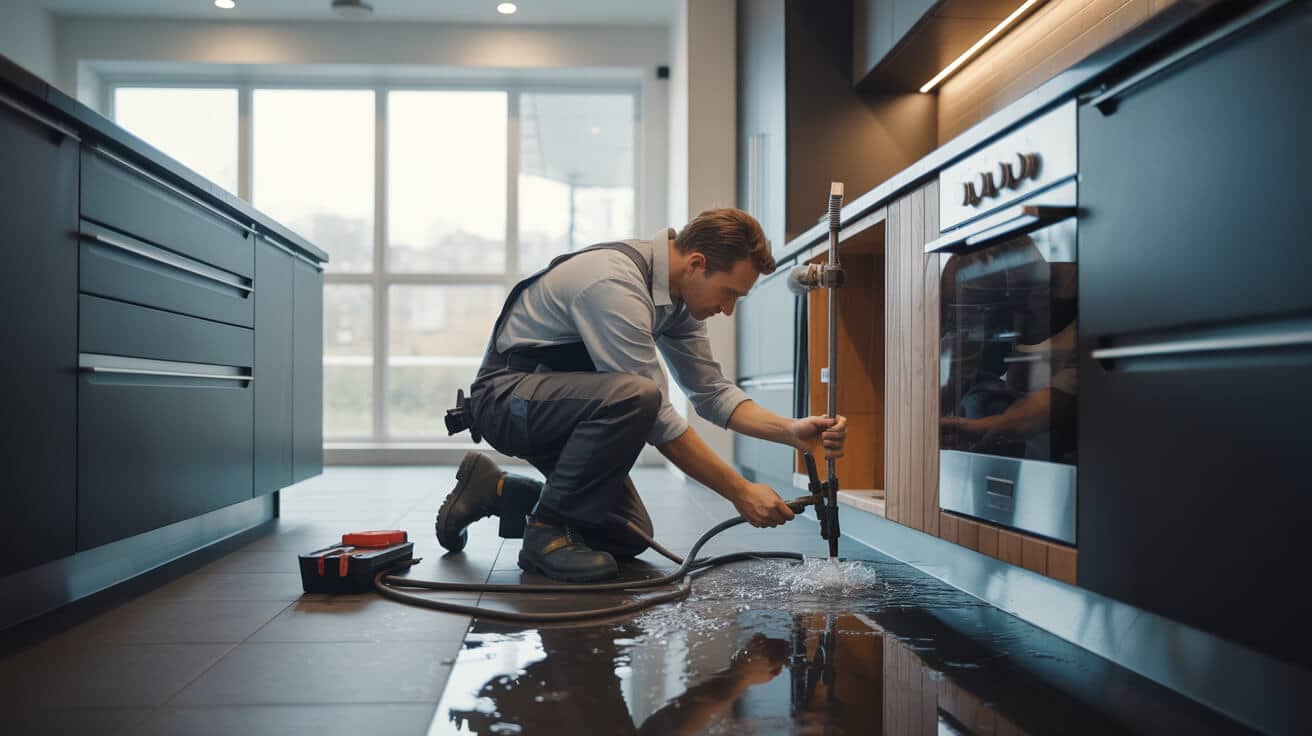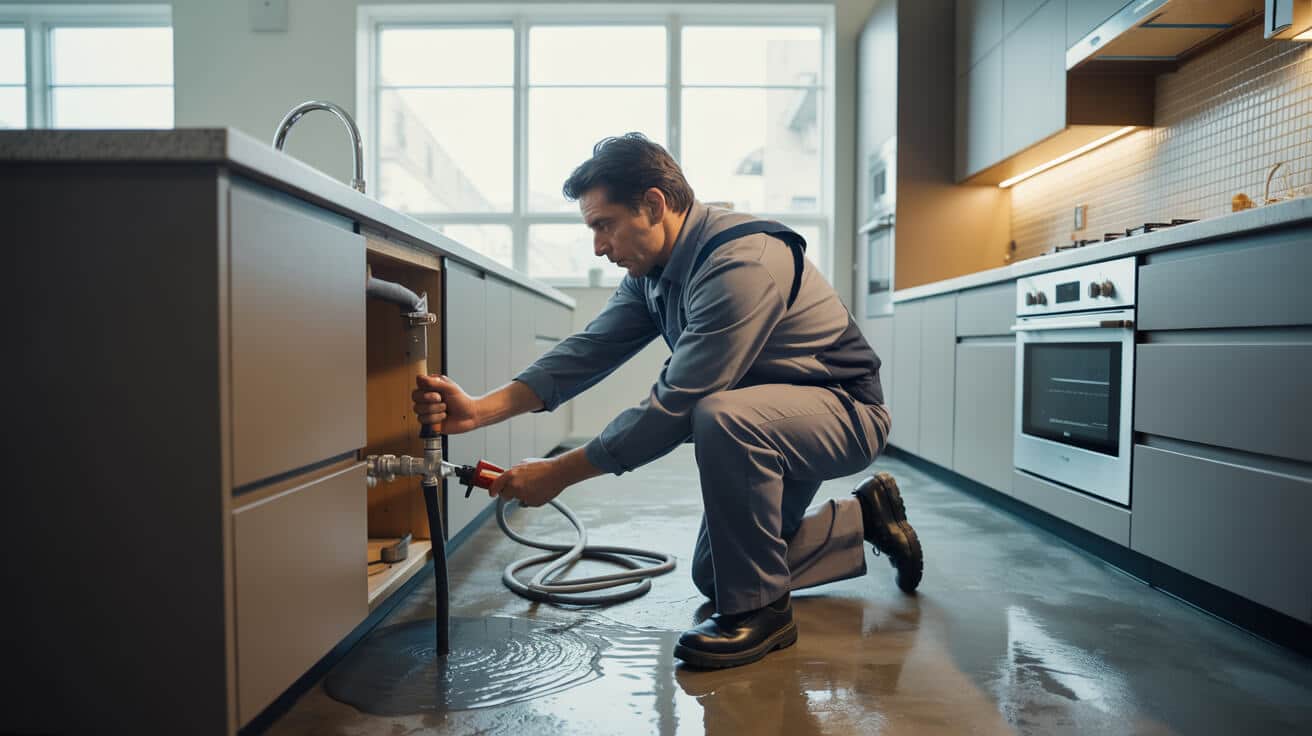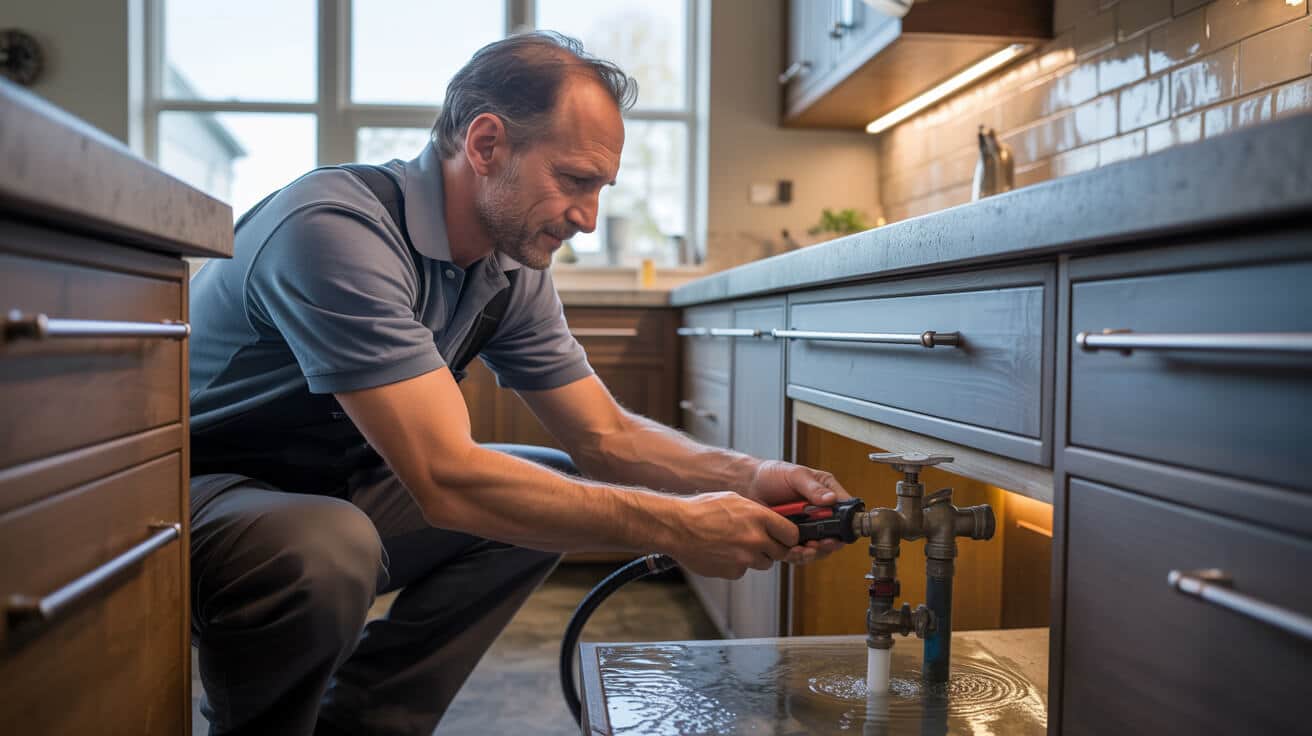Burst pipe repair is a key technical intervention within plumbing and heating systems, addressing the immediate disruption caused by pipe failure and preventing cascading damage that can compromise structural integrity. Repair procedures are implemented following a systematic approach that includes emergency response, diagnostic testing, and the application of either temporary or permanent repairs. Ensuring safety, functionality, and regulatory compliance is a priority, particularly in environments where water pressure and system reliability are paramount.
Overview / Context
burst pipe incidents occur when a section of pipe fails, leading to an uncontrolled release of water, which can severely impact both residential and commercial properties. The phenomenon is generally precipitated by several factors, including material degradation through corrosion, sudden temperature fluctuations that cause expansion and contraction, and external or operational conditions leading to over-pressurisation. Burst pipe repair lies at the intersection of maintenance, emergency management, and long-term system reliability.
In plumbing and heating, maintaining uninterrupted water supply and efficient heating is essential. As such, a well-executed burst pipe repair not only rescues the immediate system but also plays a central role in preventive maintenance regimes. The integration of advanced diagnostic tools and standardised repair protocols enhances the efficacy of repairs, reducing downtime and minimising the risks associated with subsequent failures.
History
The evolution of burst pipe repair mirrors the broader technological and material advancements in the plumbing industry. Initially, repairs were predominantly ad hoc, relying on basic techniques such as the use of temporary clamps and simple sealants. In the early days, such methods provided limited efficacy, with repairs often failing to withstand subsequent operational pressures.
- Origins and Early Methods:
Early repair efforts involved manual clamping and patching methods. Materials such as lead and early forms of plastic were commonly used, though their longevity was limited by inherent material weaknesses.
- Industrial Emergence:
With the advent of modern manufacturing processes in the mid-20th century, the introduction of more durable alloys and plastics significantly improved the durability of plumbing systems. Innovations such as soldering for copper pipes and the development of compression fittings paved the way for more reliable repair techniques.
- Contemporary Evolution and Innovations:
In recent decades, burst pipe repair has benefited from advanced diagnostic and repair technologies. Techniques now often incorporate thermal imaging, acoustic leak detection, and hydrostatic pressure testing to accurately locate failures. These technological and methodological advances have contributed to a precise and systematic approach in contemporary repair practices, ensuring safety and durability while concurrently addressing regulatory and environmental considerations.
Concept / Description
Burst pipe repair centres on a systematic process that addresses pipe failure through immediate intervention and permanent resolution measures. The phenomenon of burst pipes is usually linked to several key factors:
- Underlying Causes:
Pipes may burst as a result of corrosion, where chemical reactions corrode metals over time; environmental stresses, such as freezing temperatures leading to water expansion; and operational faults, such as pressure surges exceeding the design limits of the piping system.
- Repair Process:
The repair process is typically divided into two phases:
1. Emergency Response: This initial phase involves shutting off the main water supply, isolating the affected section, and applying temporary measures (e.g., clamps or repair tape) to stop water flow.
2. Definitive Repair: In this phase, professionals undertake a thorough diagnostic assessment and implement a permanent fix by replacing the damaged pipe section or repairing it permanently through soldering, compression fittings, or push-fit couplings.
- Technical Framework:
The theoretical underpinning of burst pipe repair involves understanding water pressure dynamics, material properties, and the interaction between environmental factors and pipe integrity. This comprehension is critical to selecting the most appropriate repair methodology, whether a quick temporary stopgap or a robust, permanent solution.

Functionality / Purpose / Applications
The core purpose of burst pipe repair is to quickly restore the functionality of a compromised water system while preventing secondary damages. This function is integral across various application domains:
- Safety and Risk Mitigation:
Repairing burst pipes promptly prevents further water damage and minimises risks such as mould growth, structural decay, and electrical hazards. In commercial and residential contexts alike, timely repair is essential for safeguarding both property and human life.
- Operational Continuity:
Rapid repair of burst pipes ensures that heating and plumbing systems resume normal operation with minimal disruption. This is particularly important in settings where downtime can lead to significant economic losses or service interruptions.
- Regulatory Compliance:
Burst pipe repair is executed in strict adherence to industry standards and regulations. Proper repair practices not only extend the lifespan of the local infrastructure but also ensure that the service ideally meets the compliance standards set forth by bodies such as WRAS and the Gas Safe Register.
- Maintenance Integration:
Beyond emergency response, burst pipe repair forms a critical component of larger preventive maintenance programmes. Systematic repair and documentation enable ongoing evaluation of pipe conditions, helping to preempt future failures and extend the operational lifespan of plumbing installations.
Classifications / Types / Variants
Burst pipe repair methods can be classified based on several criteria:
- Temporary vs. Permanent Repairs:
- Temporary Repairs:
These interventions are designed to provide immediate relief by temporarily stopping water flow, allowing time for more comprehensive actions. Examples include the use of pipe clamps, repair tapes, and emergency sealants.- Permanent Repairs:
Permanent solutions involve a full-scale restoration of the damaged pipe. This may include complete pipe replacement, re-soldering, or the installation of new compressive fittings. Permanent repairs are intended to ensure long-term integrity and revert the system to its original performance capabilities.- Material-Based Approaches:
Repair techniques vary significantly depending on the type of material involved:
- Copper Pipes: Common methods include soldering and the use of compression fittings.
- Plastic/PEX Pipes: Push-fit couplings or specialised repair kits are frequently employed.
- Metallic Hybrid Systems: Combination approaches might be necessary when dealing with pipes made from mixed materials, requiring tailored repair techniques.
- Technique Variants:
Classifications may also be made by the method employed, such as:
- Soldering: Involves melting solder to fuse pipe sections firmly, applicable in higher-pressure environments.
- Compression Fittings: Provide a secure, quick-fix solution without the need for high-temperature equipment.
- Push-Fit Couplings: Offer a reliable means of sealing pipes using a simple insertion mechanism, suitable for both emergency situations and permanent repairs.
Systems / Tools / Methodologies
Effective burst pipe repair is underpinned by a range of diagnostic tools and methodologies:
Diagnostic Methods
- Visual Inspection:
This primary method involves examining the pipe for visible signs of damage, such as corrosion marks, cracks, or water stains. Visual cues can indicate the location and extent of a burst.
- Thermal Imaging:
Thermal cameras are used to detect temperature anomalies along the pipe, highlighting areas where water leakage may be occurring even if no visual damage is evident.
- Acoustic Leak Detection:
Specialised equipment listens for the sounds of water escaping under pressure. By analysing the sound frequencies, technicians can pinpoint the exact location of the leak.
- Hydrostatic Pressure Testing:
This involves pressurising the system with water to test for the pipe’s ability to maintain pressure over time, thereby revealing potential weak points.
- Dye Tracing:
A dye is introduced into the water system to visually confirm the path of a leak, helping to isolate the affected area.
Tools & Equipment
A range of specialised tools supports effective repair:
- Pipe Cutters and Saws:
These are used to remove the damaged section of the pipe with precision.
- Blowtorch and Soldering Kits:
Essential for repairing or rejoining copper pipes, these tools ensure a robust, permanent connection.
- Compression Fitting Tools:
Tools designed for installing compression fittings and ensuring that the repair is secure.
- Repair Clamps and Sealant Tapes:
Often used in temporary repairs to stem water flow until a permanent solution can be implemented.
- Pressure Gauges and Test Pumps:
These devices verify that the repaired section can withstand normal operating pressures.
- Thermal Cameras and Acoustic Detectors:
Used during the diagnostic phase to locate and characterise the leak.
Methodological Steps
The typical methodology for burst pipe repair includes: 1. Isolation:
The first step is to shut off the main water supply to prevent further loss and minimise internal pressure. 2. Diagnosis:
Using the appropriate diagnostic tools, technicians identify the specific cause and location of the burst. 3. Temporary Repair:
Emergency measures, such as the application of a pipe clamp or repair tape, are implemented quickly to control the leak. 4. Definitive Repair:
Following temporary stabilisation, the damaged pipe section is replaced or permanently repaired using proper techniques. 5. Testing and Re-pressurisation:
The repaired section is carefully tested under pressure to confirm the integrity of the repair. 6. Documentation:
Detailed records of the repair process, including methodologies, tools used, and test results, are maintained for future reference and quality assurance.
Stakeholders / Entities Involved
Burst pipe repair involves several key parties within the plumbing and heating ecosystem:
- Plumbing and Heating Companies:
Service providers perform both emergency and routine repair work. Their expertise and adherence to standards are pivotal in ensuring a durable repair.
- Regulatory Authorities:
Organisations such as WRAS and the Gas Safe Register set standards that govern repair procedures, ensuring that work is carried out to objective safety and quality benchmarks.
- Property Owners and Managers:
Homeowners, landlords, and commercial property managers rely on skilled repair services to secure their assets and minimise disruption.
- Insurance Providers:
Insurance companies monitor repair work to assess risk, and documentation of well-conducted repairs can influence policy premiums and claims processing.
- Technical Manufacturers:
Producers of pipes, fittings, and repair tools contribute indirectly by offering products that meet or exceed industry standards.

Legal / Regulatory / Ethical Considerations
Burst pipe repair operates within a strict legal and regulatory framework, ensuring that repairs meet technical and safety standards:
- Regulatory Compliance:
Repair practices must conform to national standards such as WRAS guidelines, G3 certification requirements for unvented cylinders, and CP12 for gas safety. Compliance ensures that repairs are not only technically sound but also legally defensible.
- Industry Standards:
Adhering to building regulations (e.g., Parts G, H, L, P) ensures that repair methods are current with industry best practices.
- Ethical Obligations:
Repair professionals must act transparently, providing accurate documentation of repairs and quality assurance tests. This fosters trust between service providers and their clients while safeguarding public safety.
- Risk Management:
Proper adherence to legal standards helps mitigate potential risks such as prolonged water damage, mould growth, or structural instability, while also influencing insurance policies and future property valuations.
Performance Metrics / Data / Measurements
Evaluating the success of burst pipe repair involves both quantitative and qualitative measures:
- Pressure Testing:
Hydrostatic and pressure tests are administered to ensure that the repaired section can maintain the expected water pressure without leakage.
- Leak Detection Post-Repair:
Subsequent tests, including thermal imaging and acoustic monitoring, are used to verify that the repair is sound.
- System Re-pressurisation:
Re-pressurisation of the system and monitoring for pressure drop are key indicators of a successful repair.
- Documentation of Outcome:
Detailed test data and repair logs serve as benchmarks for future maintenance, ensuring continuous adherence to performance standards.
- Customer Feedback:
While technical metrics are vital, customer satisfaction and reduced incident recurrence also serve as key performance indicators.
Challenges / Barriers / Limitations
Several operational and technical challenges can complicate burst pipe repair:
- Technical Factors:
- Material Variability: Different pipe materials (copper, PEX, MDPE) respond differently to stress and require tailored repair methods.
- Wear and Degradation: Over time, corrosion and repeated freeze-thaw cycles degrade piping, leading to unexpected failures.
- Operational Constraints:
- Emergency Response: The need for rapid intervention in emergencies may pressure technicians to opt for temporary fixes rather than comprehensive repairs.
- Coordination Among Stakeholders: Effective repair often requires prompt response and coordination between service providers, regulators, and the property owner.
- Economic and Social Factors:
- Cost Considerations: High repair costs may lead property owners to delay repairs or opt for suboptimal solutions.
- Communication Barriers: Differing expectations between technical professionals and property managers can lead to misunderstandings and dissatisfaction.
- Regulatory Complexity:
- Evolving Standards: Regulatory guidelines evolve with advancements in technology, which may render older repair methodologies obsolete or non-compliant.
- Documentation Requirements: Maintaining thorough documentation that meets regulatory standards can be resource-intensive but is critical for ensuring quality and accountability.
Impact / Influence / Legacy
Well-executed burst pipe repair has several significant impacts on the market and industry:
- Property Preservation:
Effective repairs minimise water damage and structural deterioration, safeguarding property values and ensuring long-term operational integrity.
- Operational Continuity:
By restoring system functionality quickly, quality repairs reduce downtime and enhance the reliability of residential and commercial plumbing systems.
- Standard Setting:
High-quality repair practices contribute to establishing industry benchmarks, stimulating continuous improvement in repair methodologies and safety standards.
- Risk Reduction for Clients:
Proper repairs influence insurance rates and reduce liability risks by ensuring that plumbing systems operate safely and efficiently.
- Economic Benefits:
Minimising repair frequency and managing water damage translate into lower maintenance costs and fewer insurance claims, benefiting both property owners and service providers alike.
Future directions, cultural relevance, and design discourse
Advancements in burst pipe repair are poised to transform both the technical and cultural landscape of plumbing maintenance:
Technological Innovations
Emerging diagnostic tools, such as enhanced thermal imaging cameras and improved acoustic sensors, promise earlier detection of pipe weaknesses, allowing for proactive maintenance rather than reactive emergency repairs. Digital tools that model hydraulic behaviour could lead to the development of predictive maintenance strategies where issues are identified and remedied before catastrophic failure occurs.
Sustainable Practices
As environmental considerations gain prominence, the integration of sustainable materials and repair methods becomes increasingly significant. Innovations aimed at reducing water waste, lowering energy consumption, and using eco-friendly sealants and repair compounds are influencing modern repair practices. Enhanced repair techniques that extend the lifetime of existing infrastructure may contribute to more sustainable building management practices.
Regulatory Evolution
Changes in regulatory standards will continue to shape repair methodologies. Future revisions to national plumbing guidelines and building regulations are likely to require more precise documentation and improved testing protocols, ensuring that repairs are uniformly effective and safe. The legacy of rigorous compliance processes is expected to drive higher standards in both emergency response and routine maintenance.
Cultural and Design Implications
From a cultural standpoint, the broader narrative surrounding plumbing repairs is evolving. As consumers become more environmentally aware and technology-savvy, there is increasing demand for transparent, efficient, and sustainable repair services. The integration of aesthetically pleasing yet functionally robust repair methods aligns with the modern expectation that technical solutions should also be unobtrusive and well-integrated into the living environment.
Integration of Advanced Monitoring
The future may also see the merger of repair systems with advanced monitoring – such as digital twin simulations, real-time sensor data analysis, and automated diagnostic platforms – enabling a continuous feedback loop. This integration would not only enhance repair accuracy but also ensure that repairs result in lasting improvements and align with evolving industry benchmarks. This technological convergence could eventually define a new era in preventive maintenance, where systems autonomously optimise repair cycles and predict further failures.
Evolving Service Models
In the coming years, the role of professional service providers like Plumbers 4U will likely evolve. Businesses in the plumbing and heating sector may adopt more integrated service models that combine emergency repairs with long-term maintenance contracts. These models will emphasise transparency, regular system evaluations, and a proactive approach to safety and performance, reflecting broader trends in property management and facility services.
The future of burst pipe repair is intrinsically linked to broader societal trends that emphasise sustainability, technological integration, and enhanced regulatory frameworks. As these elements converge, the industry is expected to move toward more reliable, efficient, and eco-friendly repair methodologies, ultimately reshaping the way property owners, managers, and service providers approach plumbing maintenance and repairs.

